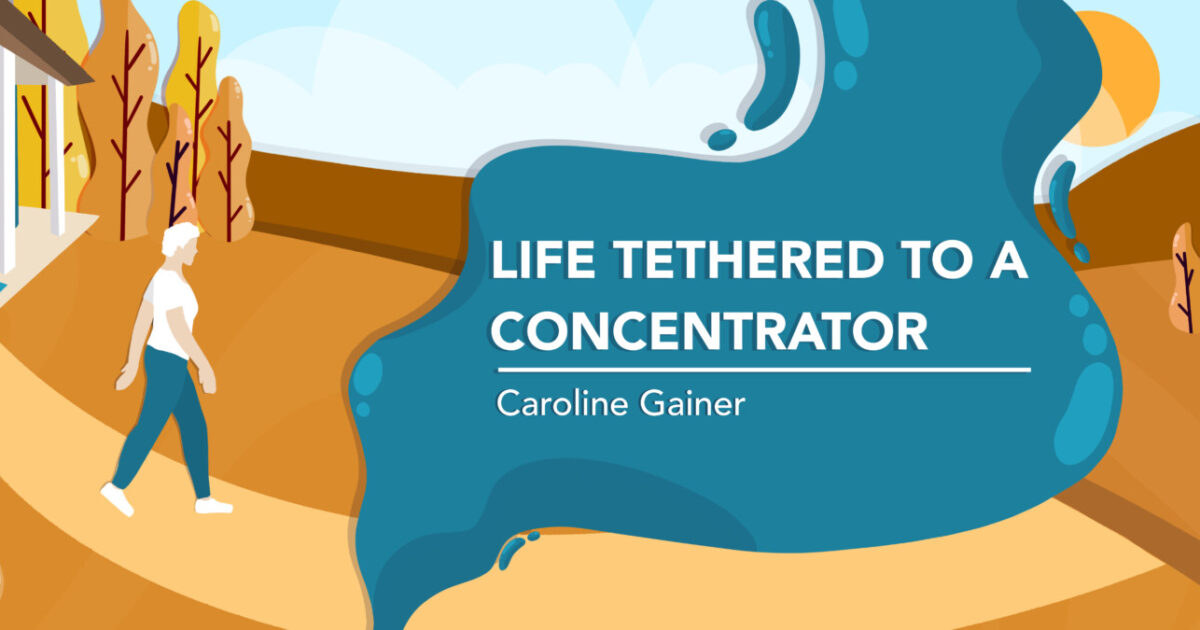Though I attempted to follow my treatment plan and watched for signs of an impending exacerbation, one crept up on me this summer and caused a worsening of my dyspnea, or the shortness of breath that happens to those of us with chronic obstructive pulmonary disease (COPD).
It’s changed my life, at least for now. I can no longer pretend that I don’t have COPD while doing daily chores, for instance. My portable oxygen concentrator had allowed me the freedom to function without thinking about my diagnosis, but since my exacerbation, my almost-constant companion is my stationary oxygen concentrator with its extra-long tubing.
It reminds me of my disease all the time.
Using the stationary concentrator forces me to roll the hose up or let it out as I walk around the house. As an example, I must roll the hose up and leave it at the top of the stairs as I carry the laundry basket downstairs. Then I roll it back up as I climb back up. The portable concentrator, unfortunately, no longer provides enough oxygen for my daily activities at home.
Maneuvering the tubing is a constant ordeal, and sometimes I get angry about it. I only swore at the tubing twice while changing the drapes in the living room, a task that’s never been easy, even when I didn’t need oxygen. The picture window in my living room is 8 feet wide, so its decorative rod and lined drapery are unwieldy, especially since the fulcrum of that effort — me — is only 5 feet tall. The extra tubing made a difficult task more so.
I’ve been able to continue to use my portable tank for grocery shopping and doctor visits, though, which helps.
Assessing the oxygen saturation rate I need
My oxygen saturation rate seems to be consistently above 88% (normal is 95% to 100%), but that figure drops when I climb the steps with a load of laundry.
Just how long can a person have low oxygen saturation before damage occurs? The answer is unknown. I feel that any amount of time with low oxygen saturation is too long, as expressed in a 2019 COPD News Today article, “Oxygen Manifesto, Part 1: Advice from 3 Respiratory Therapists.”
I’m not sure my oxygen saturation is staying above 88% while using my portable concentrator because I don’t feel short of breath until my numbers are in the low 80s to high 70s. On my outings, I rely on my pulse oximeter, which measures saturation just as it does when I am at home. Though most pulmonologists want the reading to be 92% and above, the danger point is established at 88% and below.
Though I’m unhappy with needing to use my 50-foot tether to my stationary concentrator, my desire to live and remain active outweighs its downsides. I’ll continue to do my aerobics, strength training, and breathing exercises in hopes that I’ll return to my preexacerbation fitness and do without all of that tubing in the house.
Change can be challenging, but we must make the necessary adjustments when our health and longevity are at stake.
Note: COPD News Today is strictly a news and information website about the disease. It does not provide medical advice, diagnosis, or treatment. This content is not intended to be a substitute for professional medical advice, diagnosis, or treatment. Always seek the advice of your physician or other qualified health provider with any questions you may have regarding a medical condition. Never disregard professional medical advice or delay in seeking it because of something you have read on this website. The opinions expressed in this column are not those of COPD News Today or its parent company, Bionews, and are intended to spark discussion about issues pertaining to chronic obstructive pulmonary disease.
